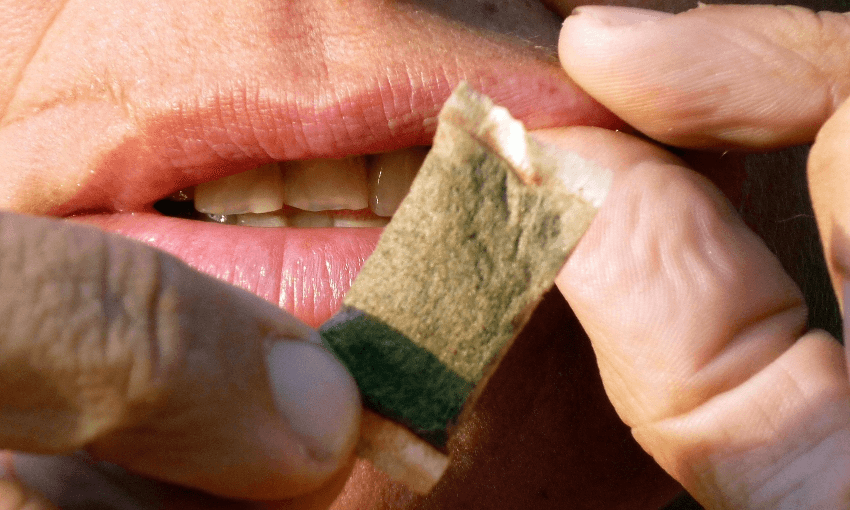Those looking for an alternative to smoking are increasing going for the small pouches of leaves known as Snus. But what on earth are they, and are they really as safe as is claimed?
No but really, what is a Snus?
A snus is a small pouch, filled with tobacco or some other leaf, which you put in between your lips and gums. Basically, it’s a teabag for nicotine, which you brew up in your mouth for about half an hour per pouch.
Why would anyone want to do that?
Basically, the major selling point for snus is that it’s a way of getting a nicotine hit, without also having to actually take smoke into your lungs. That can mean a significant amount of harm reduction, as much of the damage of smoking comes from inhaling the smoke itself. It also makes nicotine consumption possible any time, anywhere. In theory, vaping inside workplaces isn’t banned like smoking is, but in practice many organisations and venues don’t allow it.
Where does the word Snus come from?
Pronounced kind of like snooze, the word snus comes from Swedish, which to this day is where the largest amount of snus-sucking takes place. It’s a translation of the word ‘snuff’, even though snuff is a whole other thing entirely – that’s when you snort powdered tobacco right up into your nose.
And now snus is getting more popular in New Zealand?
It is, but slowly. Cosmic Corner is among the few retailers around the country who stock snus products, under the White Fox brand. Nell Rice, the head buyer for Cosmic, said it continues to grow in popularity. “We’ve had it for about six months or so, and it’s definitely found a niche. It’s already super-popular in Europe.” Right now in Sweden, more men consume snus than smoke. Rice also said that there wasn’t really any sort of observable consumer demand for snus in New Zealand until recently, with interest corresponding with availability.
So is it, or is it not, tobacco?
The snus products on sale in New Zealand are not tobacco. In fact, these Ministry of Health guidelines suggest that tobacco snus are actually banned in New Zealand. But while non-tobacco snus are still R18 (as is the case with all nicotine delivery products), in other ways snus aren’t subject to the same laws as cigarettes.
How so?
Snus can be branded in a way that is no longer allowed for other tobacco products. Hence, you can buy packets of ‘White Fox’ snus, as opposed to purchasing them in a nondescript box which is the colour of microwaved vomit. They’re also not subject to excise tax, which results in a dramatically reduced retail price. While a 20 pack of durries will now cost up to $40, a 20 pack of Snus pouches retails for about $13.
So it’s cheaper and less harmful – should we all be snusing?
Not necessarily, and it’s very important to note that such products absolutely aren’t harmless. For starters, they get you addicted to nicotine, which is literally never a good thing to get hooked on. There have been various studies undertaken on the health effects of snus-use, with some finding it correlates with higher levels of oral, throat and pancreatic cancer than if you never snuded a snus. Having said that, a report from the NZ Initiative’s Jenesa Jeram found that snus could work as a harm reduction tool, as “people smoke for the nicotine but they die from the tar”. Jeram also suggested that it made sense to have a less punitive tool for policymakers to use for the Smokefree 2025 goal, rather than simply ramping up the tax on ciggies year after year.
Are there other side effects of snus?
As with any other nicotine product, it’s the quitting which causes the worst side-effects. And the jury is somewhat out on whether harm reduction products like vaping or snus actually do help people quit smoking, as the nicotine addiction remains. Initial use of snus can cause dizziness and vomiting, particularly for those who aren’t already addicted to nicotine. Some users also report that it markedly increases salivation (others disagree) and with that, it can increase the need to spit, which is gross. And finally, nicotine is a laxative, which means that snus-users might be more likely to find themselves caught short.
Is it actually a pleasant experience to use a snus?
Here, opinions will vary. However, senior writer at The Spinoff Alex Casey tried it recently, and summed up the mouth-feel of a Snu with a negative two-word review: “It burns.”



